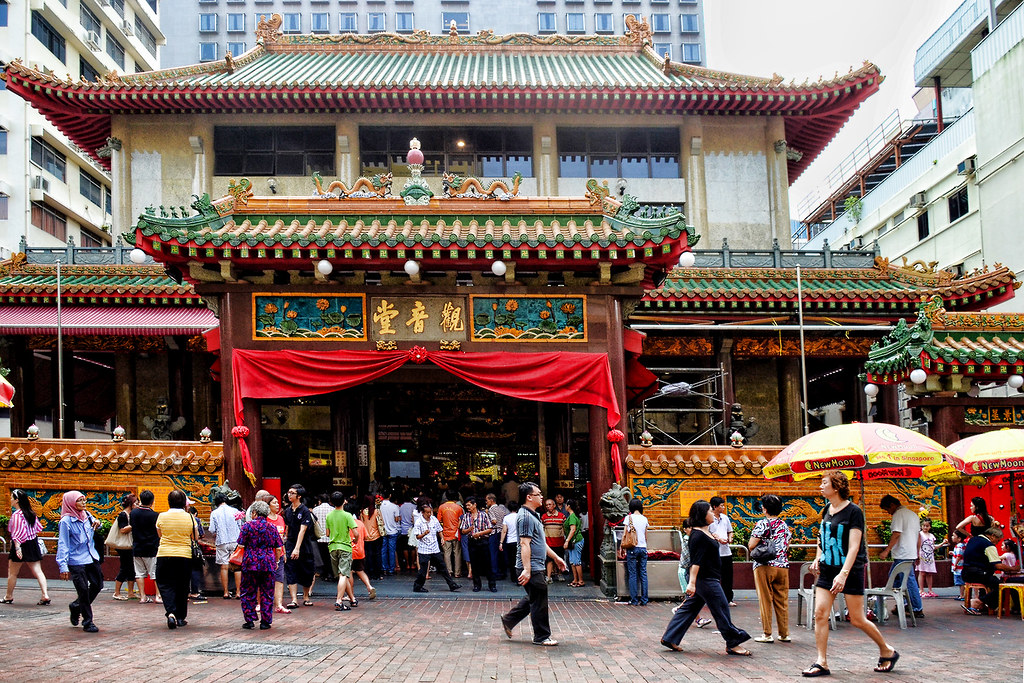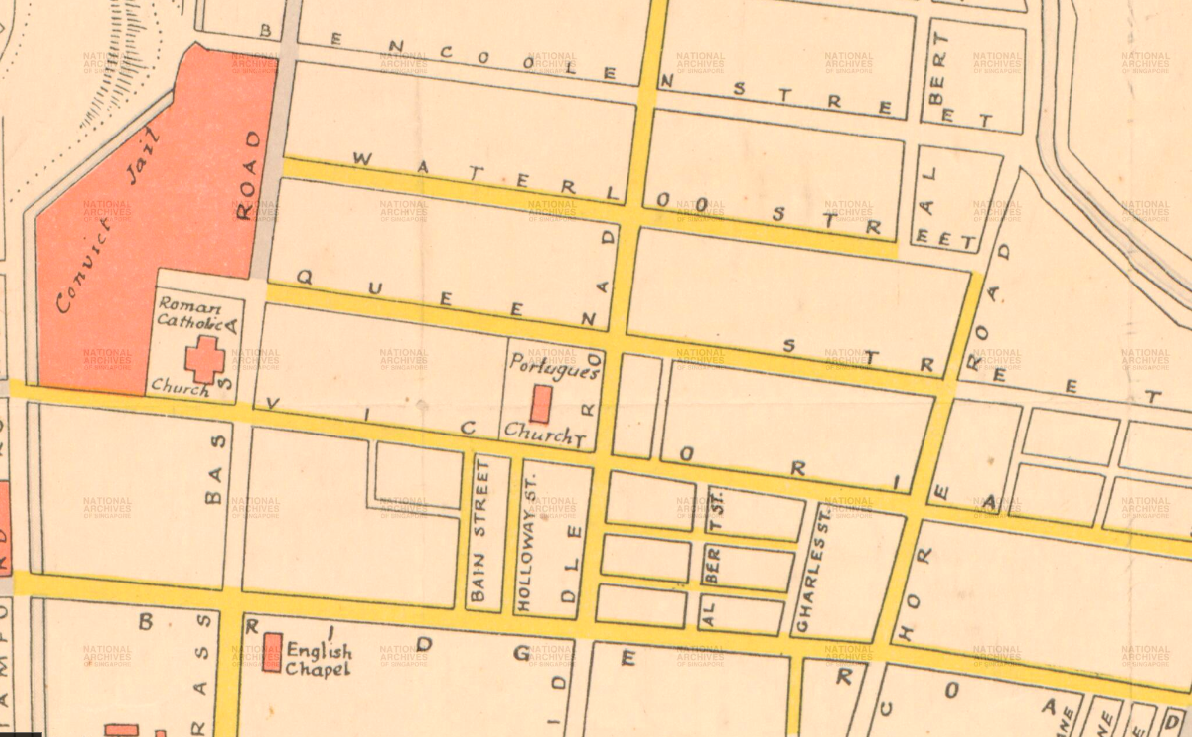Waterloo Street is a very unique street in Singapore.
It embodies Singapore's multicultural identity with the presence of the Maghain Aboth Synagogue, Church of Saints Peter and Paul, Sri Krishnan Temple and Kwan Im Thong Hood Cho Temple.
The Kwan Im Thong Hood Cho Temple sees hundreds of devotees flock to the area every weekend.
Colloquially, those who refer to the temple would often say that it is the one at “Si Beh Lor”. The very mention of this term draws instant recognition and acknowledgement of the area and the temple.
[caption id="" align="aligncenter" width="729"] Photo from here[/caption]
Photo from here[/caption]
“Si Beh Lor” is not the Hokkien translation of the Mandarin term “寺庙路”( Sì miào
Lù), which means “Temple Road”, though. It also isn’t the translation of “Waterloo Street”, which by the way is known as “滑铁卢街” (Huá tiě lú jiē) in Mandarin.
Waterloo Street was named by the British to commemorate their famous victory in the 1815 Battle of Waterloo. It is one of the oldest roads in Singapore.
So, how did “Si Beh Lor” become the reference term for the area?
A few years after his founding in 1819, Sir Stamford Raffles drew up a town plan of Singapore to designate areas where the pioneering settlers could form communities. At the centre of the plan was the Singapore River.
The Chinese, who arrived in droves, were designated to the left or west of the river, where they formed Chinatown. To the right or east of the river, were the Malay, Indian, Arab and European settlements.
Chinatown expanded rapidly and the settlement on this side of the river, along with the Raffles Place commercial district, grew to be larger than the town on the other side. This led to the Chinese community to refer to their side of the river as “大坡” (dà pō), meaning “big town” and the other side as “小坡” (xiǎo pō), meaning “small town”.
[caption id="" align="aligncenter" width="656"] Photo from here[/caption]
Photo from here[/caption]
Located on the “small town” side of the Singapore River, Waterloo Street runs parallel to North Bridge Road, Victoria Street and Queen Street.
 Photo from nas.gov.sg
Photo from nas.gov.sg
The early Chinese settlers, most of whom were hardly proficient in English, would sometimes come up with their own names for roads.
So, North Bridge Road came to be colloquially known among the Chinese community as “Sio Po Toa Beh Lor”, meaning “small town’s big/first road”.
Victoria Street was named “Sio Po Ji Beh Lor”, meaning “Small Town’s Second Street”.
Next, Queen Street was labelled “Sio Po Sa Beh Lor” (Small Town’s Third Street).
And finally, Waterloo Street was named “Sio Po Si Beh Lor”, which means “Small Town’s Fourth Street”.
This colloquial reference for Waterloo Street stuck with the community and got shortened over time to just “Si Beh Lor”.
And that’s why Waterloo Street is often still referred to by its old Hokkien name.
Related Articles:
Here’s why SGH, the oldest hospital in Singapore, is called ‘sipai-po’
Ever wonder why Choa Chu Kang is called Choa Chu Kang?
Top photo from here
If you like what you read, follow us on Facebook and Twitter to get the latest updates.
If you like what you read, follow us on Facebook, Instagram, Twitter and Telegram to get the latest updates.
